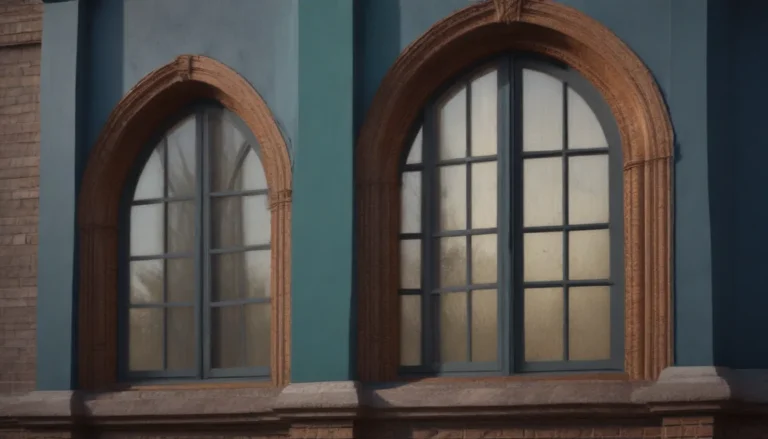Unlocking the Mysteries of Gothic Architecture

Gothic architecture, with its distinctive pointed arches, flying buttresses, and grand stained glass windows, has captivated the hearts and minds of architecture enthusiasts for centuries. Originating in the mid-12th century in France, this architectural style has left an indelible mark on Europe and the world. From towering cathedrals to majestic churches, Gothic architecture has stood the test of time and continues to inspire awe and wonder.
Unveiling the History of Gothic Architecture
The roots of Gothic architecture can be traced back to France, where it was initially known as “Opus Francigenum” or “French Work.” This innovative style emerged in the mid-12th century, marked by advancements in structural engineering that allowed for the construction of massive, light-filled structures. Gothic architecture flourished throughout Europe, particularly in buildings commissioned by the Roman Catholic Church, until the 16th century when it gained recognition as a distinct architectural style.
Throughout its evolution, Gothic architecture underwent various phases, including the Early Gothic, High Gothic, and Late Gothic years. Builders during the Gothic era departed from the thick, solid walls of Romanesque architecture, opting for thinner walls to support soaring heights. The use of flying buttresses, inclined beams that provided structural support, enabled architects to create awe-inspiring structures that reached towards the heavens.
Essential Elements of Gothic Architecture
While the specific characteristics of Gothic architecture may vary depending on the building’s age and purpose, all Gothic structures share several key elements that define the style:
Stained Glass Windows
Gothic churches and cathedrals are renowned for their towering stained glass windows, which fill the interiors with a kaleidoscope of colorful light. These intricate windows, often adorned with biblical scenes, are designed to allow maximum natural light to filter into the sacred spaces.
Pointed Arches
Distinctive pointed arches, inspired by Islamic architectural influences, replace the rounded arches of Romanesque buildings in Gothic architecture. These elegant arches not only accentuate the height of the ceilings but also symbolically point towards the divine.
Ribbed Vaults
To support the weight of tall Gothic structures and accommodate towering windows, architects introduced ribbed vaults. These intersecting arches not only provide structural support but also add visual interest to the ceilings of Gothic buildings.
Flying Buttresses
A hallmark of Gothic architecture, flying buttresses play a vital role in supporting the immense weight of Gothic buildings. These structural elements, shaped like half-arches, redistribute the load of the structure to more stable levels, allowing for the construction of lofty, open spaces.
Decorative Elements
Gothic architecture is characterized by lavish exterior decoration, including embellished columns, intricate moldings, statues, pinnacles, spires, and iconic gargoyles that adorn the facades of Gothic structures. These ornate details contribute to the grandeur and beauty of Gothic architecture.
Exploring Gothic Architecture Around the World
While personal residences in the Gothic style are rare, visitors can encounter Gothic architecture in its full glory by exploring some of the world’s most renowned cities with a rich Gothic heritage. France, the birthplace of Gothic architecture, boasts an abundance of Gothic masterpieces, but Gothic gems can also be found in Great Britain, Spain, Germany, and beyond.
Famous Examples of Gothic Architecture
From towering cathedrals to historic churches, Gothic architecture has left its mark on cities around the world. Here are some notable examples of Gothic structures:
- Westminster Abbey – London, England
- Notre-Dame Cathedral – Paris, France
- Duomo di Milano – Milan, Italy
- Cathedral of Barcelona – Barcelona, Spain
- St. Stephen’s Cathedral – Vienna, Austria
- St. Patrick’s Cathedral – New York City, USA
- Washington National Cathedral – Washington, D.C., USA
- The Tribune Tower – Chicago, Illinois, USA
- Trinity Church – Manhattan, New York, USA
- Cathedral of Learning – Pittsburgh, Pennsylvania, USA
Each of these iconic structures showcases the timeless beauty and intricate craftsmanship of Gothic architecture, inviting visitors to marvel at its splendor.
The Legacy of Gothic Architecture
Gothic architecture, with its blend of light, height, and ornamentation, continues to captivate and inspire admirers around the globe. This architectural style, born out of innovation and faith, stands as a testament to the creative genius of its builders and the enduring legacy of a bygone era. Whether you’re exploring the streets of Europe or admiring Gothic Revival structures in modern cities, let the allure of Gothic architecture transport you to a world of beauty and wonder.





